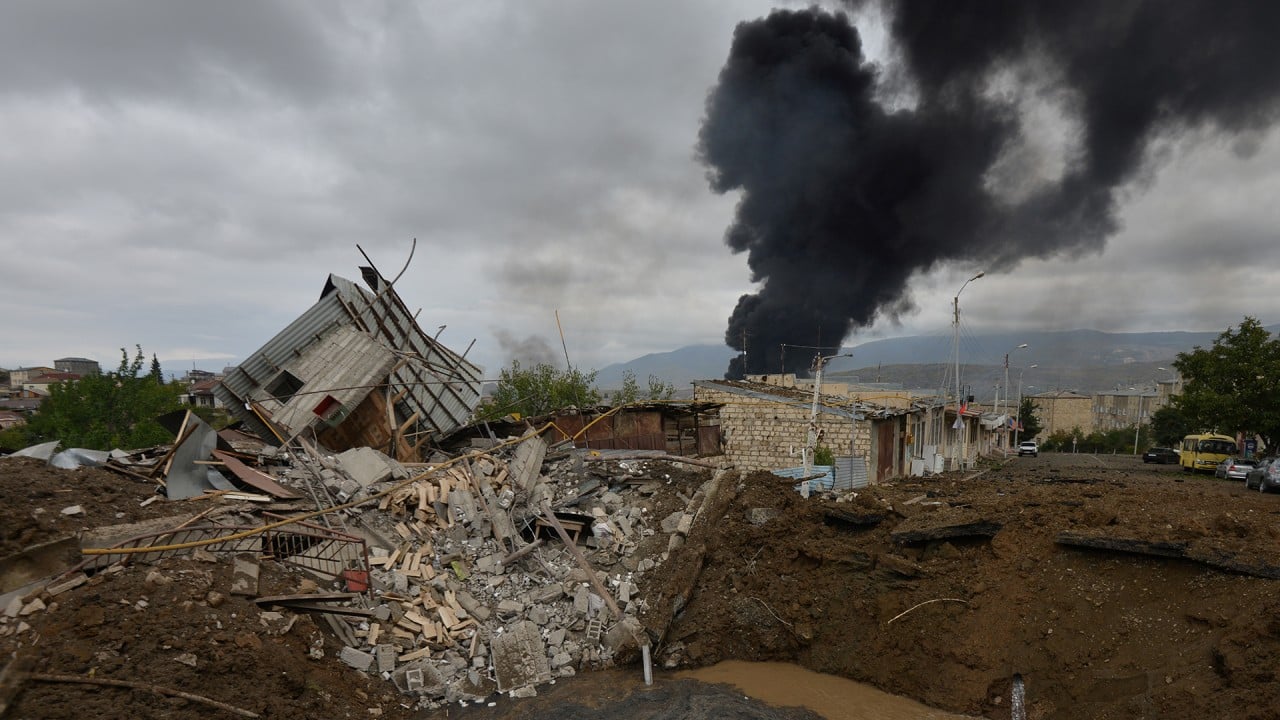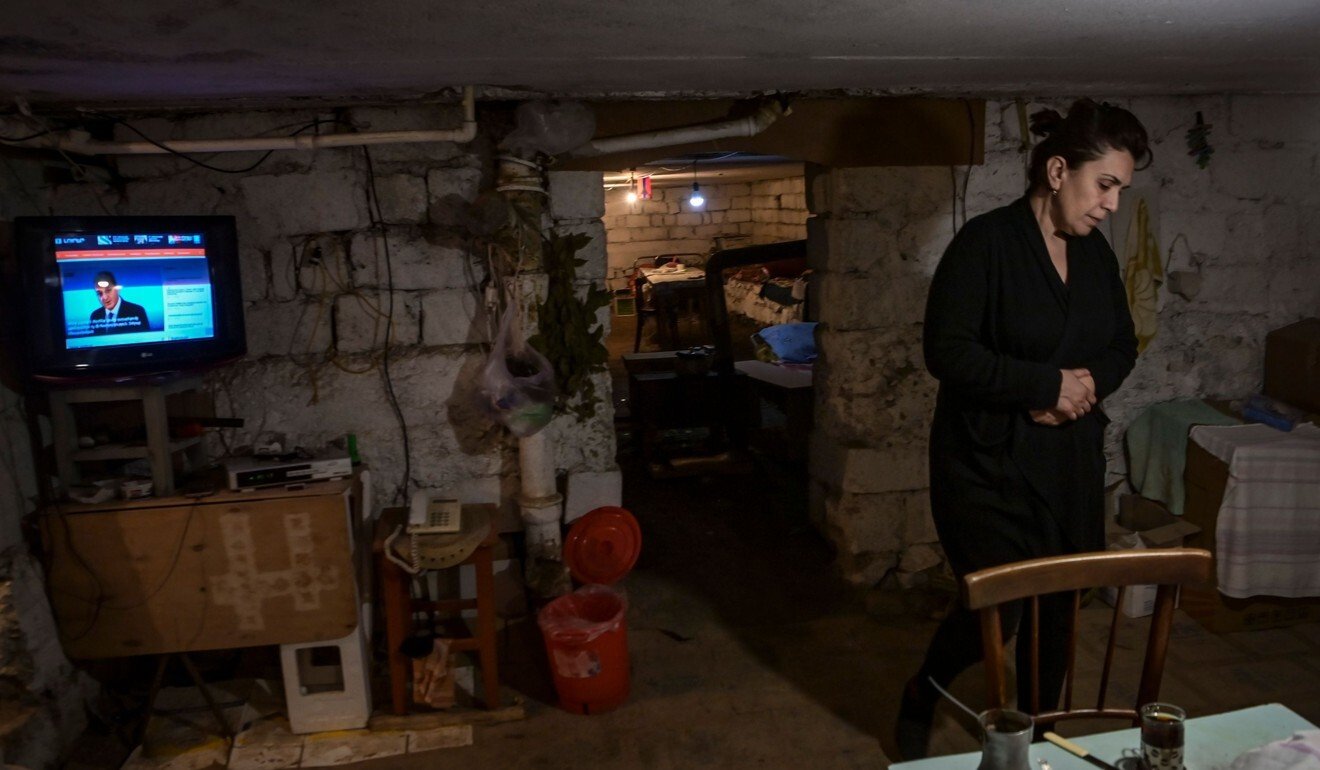
In Nagorno-Karabakh’s bomb shelters, residents safe from shelling but not coronavirus
- A three-storey building in Stepanakert has been repurposed as a bomb shelter, where residents seek refuge from shelling by Azerbaijan’s forces
- ‘The infection rate is quite high’, a doctor says because ‘people are living in groups in basements without masks’
Adjoining basements beneath one unassuming three-storey building in the city have been repurposed as a bomb shelter, where residents are seeking refuge from frequent bouts of shelling by Azerbaijan’s forces, including on Friday evening.
Most of Stepanakert’s 60,000 residents fled after fighting erupted late last month between separatists in the Armenian-majority mountainous region and the Azerbaijani army.
The largest room in the basement – around 50 square metres with a ceiling lower than 2 metres (6.5 feet) – serves as the sleeping quarters.
In Nagorno-Karabakh, drones rain death but won’t bring quick end to war
Around 10 mattresses and blankets are placed on stone benches built against the walls and the earthen floor is carpeted with cardboard boxes.
A few dim lamps hang from the ceiling over an ageing wood stove in the middle of the room, its chimney running to an outside wall.
Lusine Tovmasyan used to run a medical testing centre in Stepanakert.

03:23
Azerbaijan and Armenia accuse each other of targeting cities outside conflict zones
On Friday morning, she arrived at the building to test two women aged 63 and 76 thought to be possibly infected.
Bundled up in a coat, the older woman waits to be swabbed, sitting on a chair in the middle of the dormitory cellar.
She coughs and groans when a cotton swab is pushed up her nose and then down her throat.
The 60-year-old woman with a shawl over her shoulders is tested in the living room of her flat on the ground floor and experiences similar discomfort, muttering a few words in a weak voice and grimacing.
“We do an average of 60 tests per day,” says Tovmasyan, the only person among a half-dozen women in the cellar to be wearing a mask.
“The infection rate is quite high,” she says because “people are living in groups in basements without masks”.
“Between 40 and 60 per cent of people test positive. It depends on the day”.
Armenia and Azerbaijan accuse each other of breaking ceasefire
After swabs are processed in the Armenian capital Yerevan – around four hours away by road – Tovmasyan says health workers compile lists of whose returned positive and the people they were in contact with.
There is no testing at an infectious diseases clinic near the central hospital in Stepanakert, but the facility does treat patients with coronavirus symptoms.
Nurses are busy in one of the wards administering intravenous drips for three seated and masked men.
Samvel Galstyan, 62, doesn’t know whether he has coronavirus. He came to the facility because he had “a high temperature”.
“It’s cold in the basement. You go to bed and get up without changing your clothes. You can’t stay there so you come in and out often. Hot, cold, hot, cold, and here I am,” he said.

The chief doctor on the ward, 63-year-old Raya Simonyan, estimates that 90 per cent of Stepanakert’s remaining residents have coronavirus, but admits she has no official figures.
“The situation is very bad (...) A majority of residents are sick,” she says.
Back in the basement, a brown-haired 15-year-old teenage girl briefly emerges from under a large blanket before disappearing again.
Next to her on the edge of the bed, the girl’s mother is staring vacantly.
Her husband and son are fighting at the front, she says, and she does not know where exactly they are although she speaks to them regularly.
“We want peace and for the war to end as soon as possible,” she says tearfully.

.png?itok=arIb17P0)